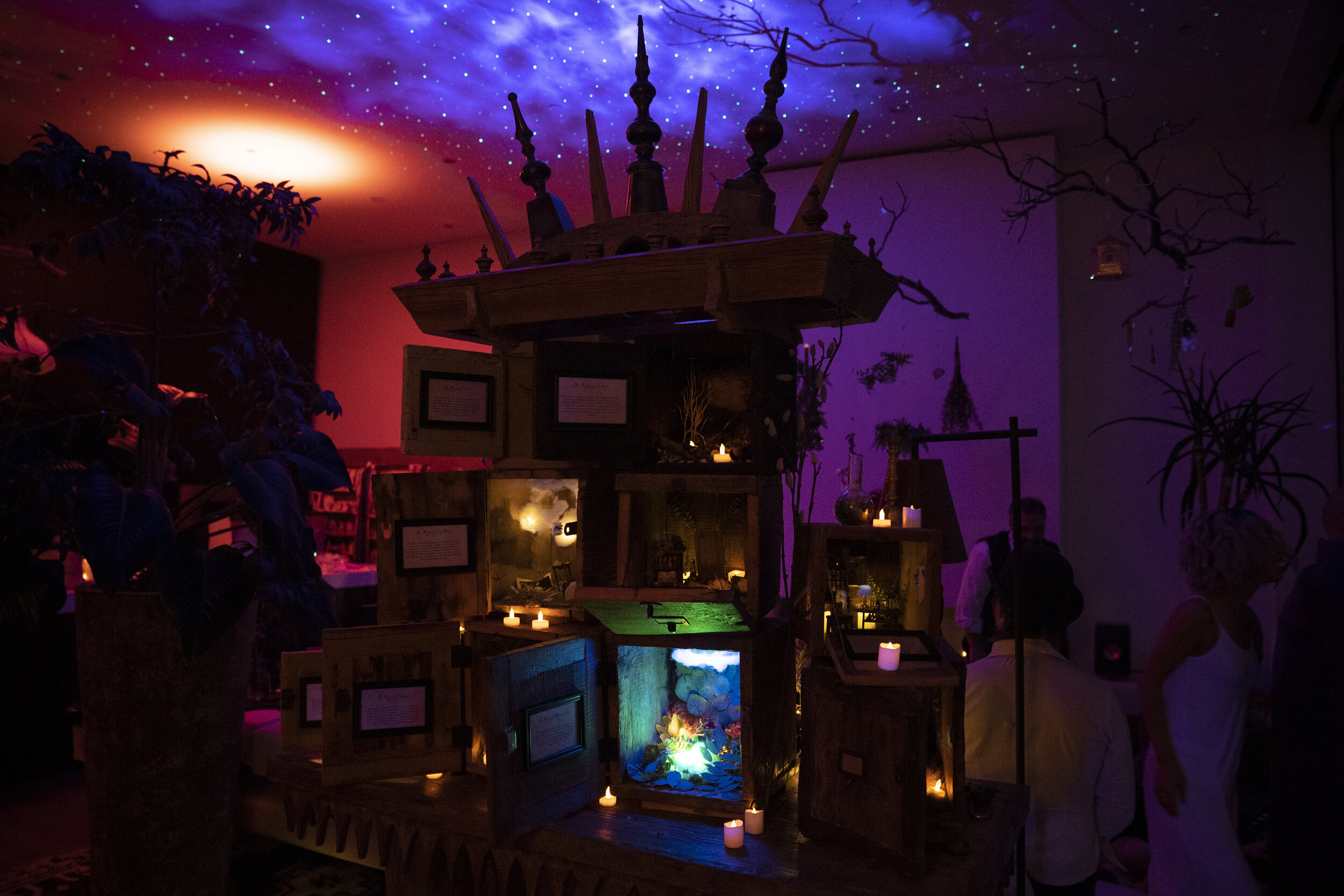We’ve all heard of “altered states of consciousness”, but what are they really and how can you design for them?
Laika O’Brien (they/them) is former Lead Experience Designer at Meow Wolf and the Founder of No Sleep Studio, a “waking dream design company” that creates bespoke immersive experiences for psychedelic safe spaces.
From custom mystery adventure dates to psychedelic excursions and beautiful ceremonies for people who are dying and their loved ones, Laika has dedicated their life to creating experiences that help participants integrate the full spectrum of emotion, connect to a story larger than themselves, and “pluck the threads of the deep mystery in which we all find ourselves”.
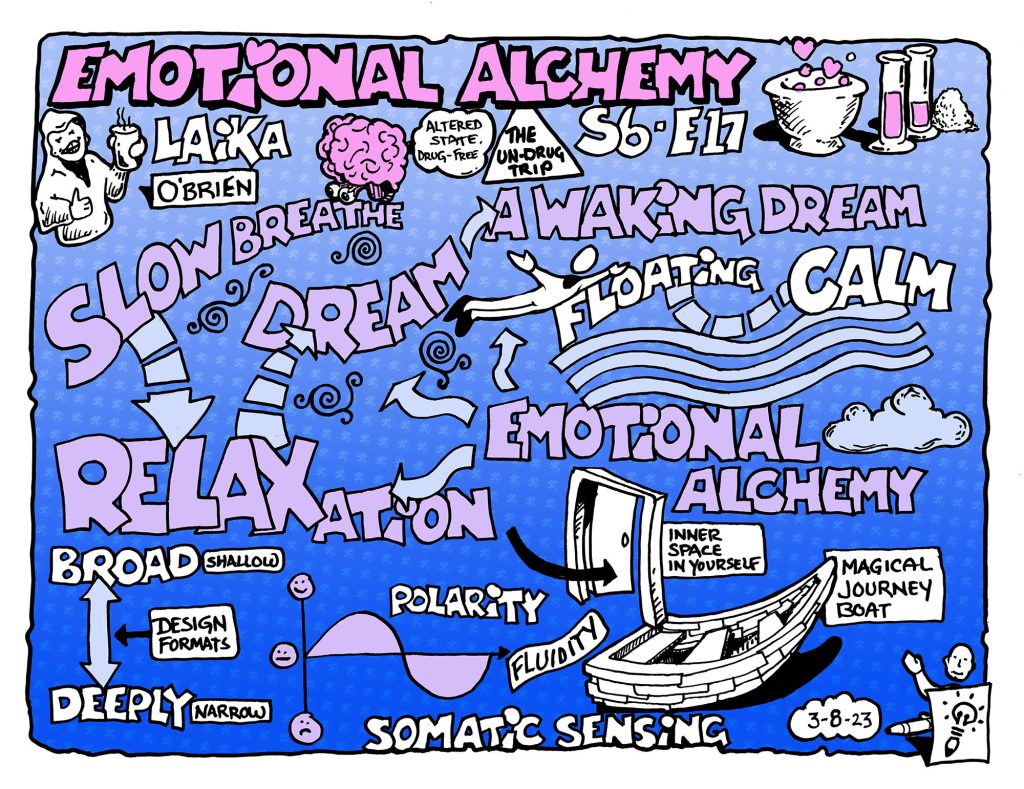
In potentially our most poetic, immersive and experiential Campfire yet, they took us on a raucous traipse through their work creating “waking dreams” – cathartic experiences that blend spoken word, hypnotic music, and beautiful imagery intended to induce altered states of consciousness.
This work spans a beautiful array of applications from healing art for psychedelic safe spaces, to immersive experiences for an audience of one and inspired rituals of remembrance for people facing end-of-life and their loved ones.
Laika did more than talk about these kinds of experiences – they also brought Campfire attendees along for the ride by performing Waking Dream 101: an introductory experience in the power of these kinds of altered states.
What Is A Waking Dream?
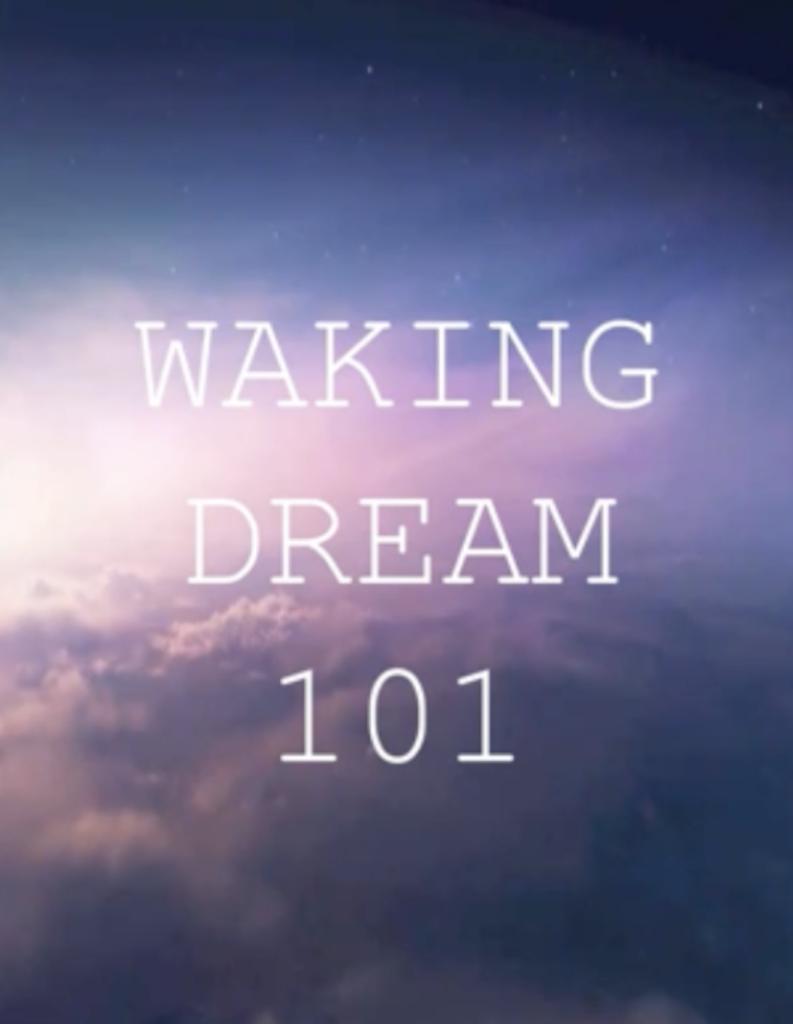
Laika kicked off by demonstrating exactly what they meant by the term “waking dream.” What at first appeared to be a dry and straightforward slide presentation about altered states of consciousness became more strange by the moment, starting to incorporate elements of surrealist collage in the slides and then bringing in a hypnotic audio track that invited participants to turn off their cameras, close their eyes and play “imagination theater”, where they endeavored to let their mind’s eye take them on a journey inspired by the guided visualization they were hearing.
Waking dreams or trance states, Laika explained, can be accessed via a multitude of avenues including but not limited to:
- Singing
- Chanting
- Drumming
- Dancing
- Exercise
- Breathwork
- Meditation
- Daydreaming
- Psychedelic Substance
- Psychedelic Experience
“Isn’t it curious that the world has given us so many means of accessing these altered states of consciousness?”
Laika O’Brien
O’Brien went on to say that a commonality between all of these states is that they are generated from, or have their home in, the body. Our somatic experience, innate connection to nature, and ability to engage with our senses can transport us to truly fantastical places and intentional experience design can be a powerful tool to get us there. And since we live in our bodies, the potential to access waking dream states is with us all the time.
To see the marvelous, glorious and extravagant in the everyday, we need only look at nature: a close-up of a single-celled algae, soybean, foot of a male diving beetle, or scales of a butterfly wing, for example.
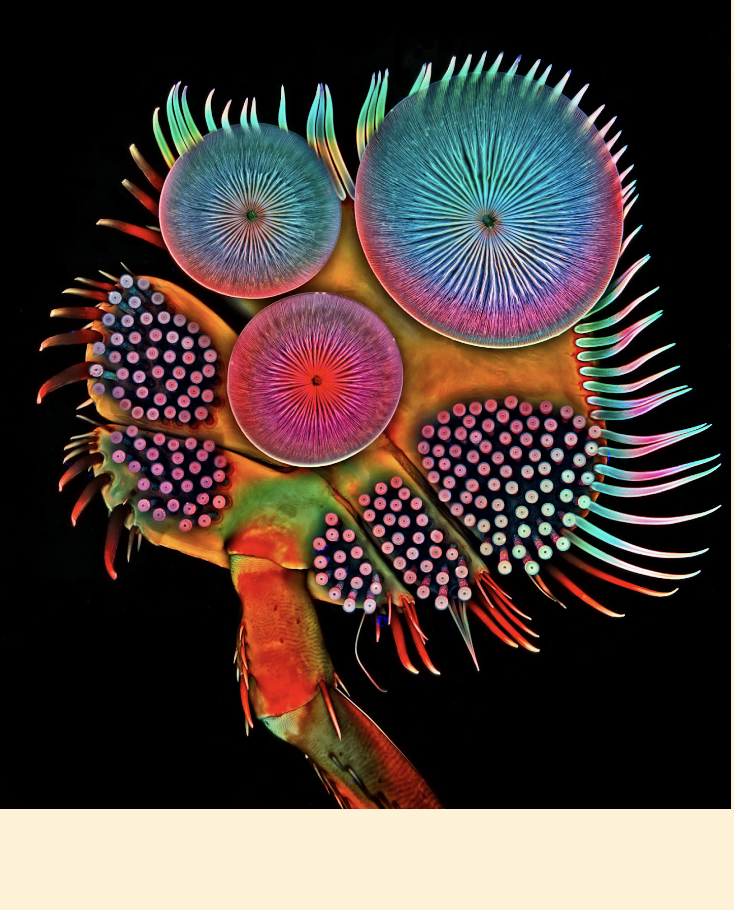
“The gods dream in the shape of nature, and if we ourselves are part of nature, what kind of dream might they be having right now?“
Laika Young O’Brien
Emotional Alchemy & The No Sleep Hotel
O’Brien then took us on a journey into the roots of their work as an experience designer, citing a deep love of poetry as the place where they got their start.
After graduating from university, O’Brien spent a year paying their rent by writing custom poems for tips on their grandmother’s old typewriter at farmer’s markets and other public locations. Patrons would tell Laika who the poem was for and offer any other information they wanted included. Laika would ask some follow-up questions and then take about ten minutes to write.
They described the process as, “emotional alchemy” or translating the information they received into poetry, using art to create something beautiful that might help the person receiving the poem experience their own story in a new way.
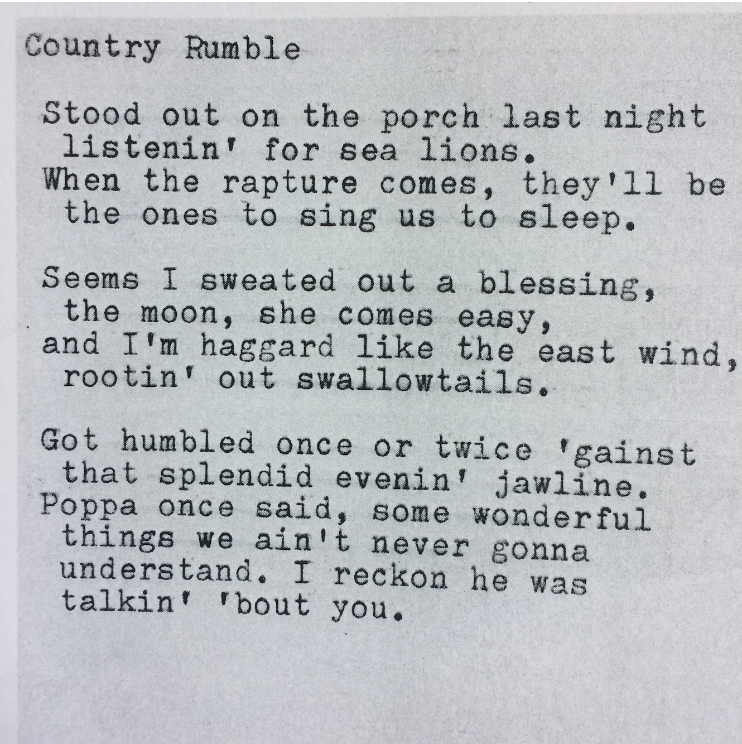
“I started to understand that the real magic that was happening wasn’t the fact that I was writing a poem at all, but that I was offering an experience of connected care and witnessing to complete strangers – using art to venerate the experiences they shared with me as part of the cohesive tapestry of their lives.”
Laika O’Brien
From Poetry To Experience Design
It didn’t take long for Laika to start writing custom poems for loved ones, then making audio tracks where they read the poems, layering in music and sound effects. The audio tracks became more like guided visualizations and then they began requesting that the recipients listen to them under specific circumstances.
In one experience, Laika asked a friend to listen to the audio track they had created on a hillside at sunset and then a stranger with a violin showed up to surprise them with a serenade–playing the same song that had just been in the audio track.
From there, O’Brien, along with their friend and co-conspirator, Justin Oliphant, began creating custom mystery adventure dates for couples under the name Swept Away Experiences. They would interview one or both people in the couple and use the information from the interview to create an evening or weekend long journey crafted to bring up specific emotions and somatic sensations.
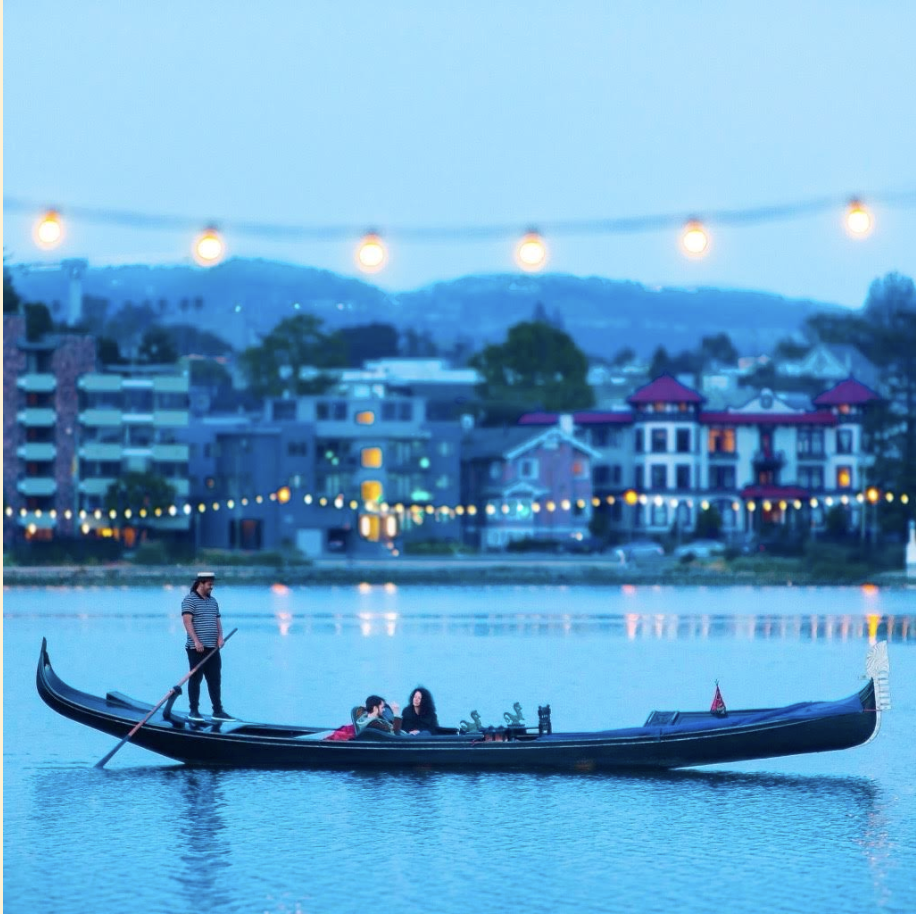
While every experience was unique, nearly all of them started in the same way. The couple would be told that they had dinner reservations at a specific place and time and O’Brien would talk with the restaurant staff in advance, put a credit card on file, and give the staff something to give the couple in lieu of the check at the end of the meal, a box with materials in it that would kickstart the rest of their adventure.
And through it all, O’Brien continued to study the work of emotional alchemy and its potential for creating beautiful, meaningful experiences.
The Birth Of No Sleep Studio
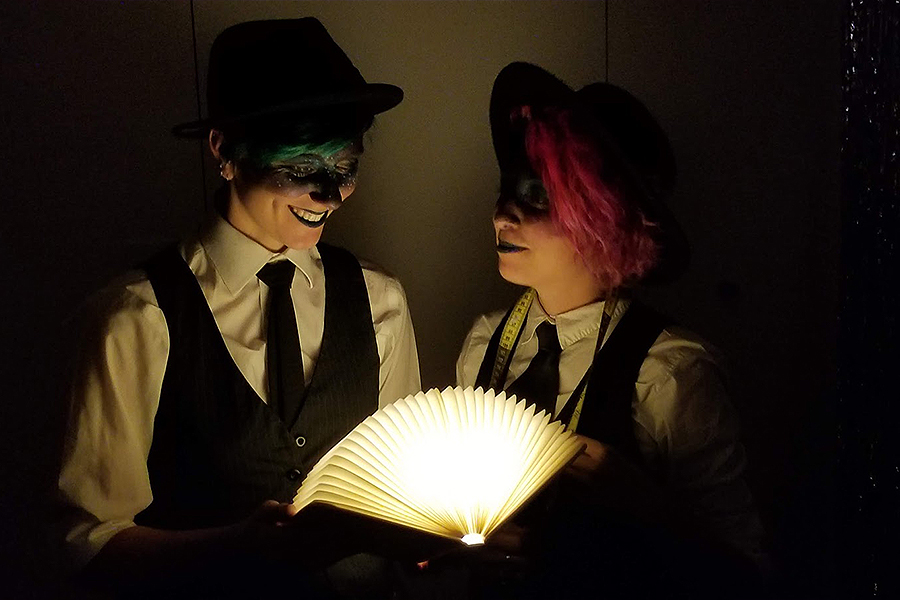
O’Brien also gave us some backstory on how emotional alchemy and imagination have played a role in their personal life and development as an experience designer. While living in a rundown beach house in California and experiencing insomnia and depression, they regularly stayed up late at night writing letters to people as if they were the operator of a steam-powered elevator inside of a place called the No Sleep Hotel, observing the comings and goings of dream characters.
Having this imaginative space to play in and being able to share that joy with others was extremely cathartic and inspiring for O’Brien and they continued to build out that world into something that, nearly a decade later, continues to be a source of much of the art that they make.
“On an island in the Seas of the Subconscious lies the dreamy little town of Sleep City where you can find fine institutions such as the Lucid Dream Archive, the Department of Recurring Dreams, and R.E.M. Radio, which broadcasts the soundtracks of peoples’ dreams live as they’re occurring across the city.
Up on a hill away from the city sits the No Sleep Hotel where the revelers go late at night when they want to party. And then, up in the attic of the Hotel is No Sleep Studio, where the artists are up late at night making dreams that they send back down to Sleep City on a pulley system.”
Laika O’Brien
And thus, No Sleep Studio was born and O’Brien started turning their writing about Sleep City into a series of “waking dream” performances intended to bring participants into dreamlike altered states of consciousness.
Teaming up with fabricator and art director Robot Long in 2017 enabled No Sleep’s work to expand from small audiences to larger interactive experiences with built environments, deepening the potential for immersion. In partnership with a rotating cast of incredible artists, they began creating immersive work for psychedelic safe spaces from festivals to private theme parties that transport participants into alternate realities.
Using a combination of ritual, narrative, set design, live actors, and an invitation to participants to play a magical surrealist version of themselves in these experiences, the team at No Sleep Studio has been able to create a multitude of powerful journeys aimed at heightening psychedelic experience, regardless of whether or not participants have ingested any mind-altering substances.
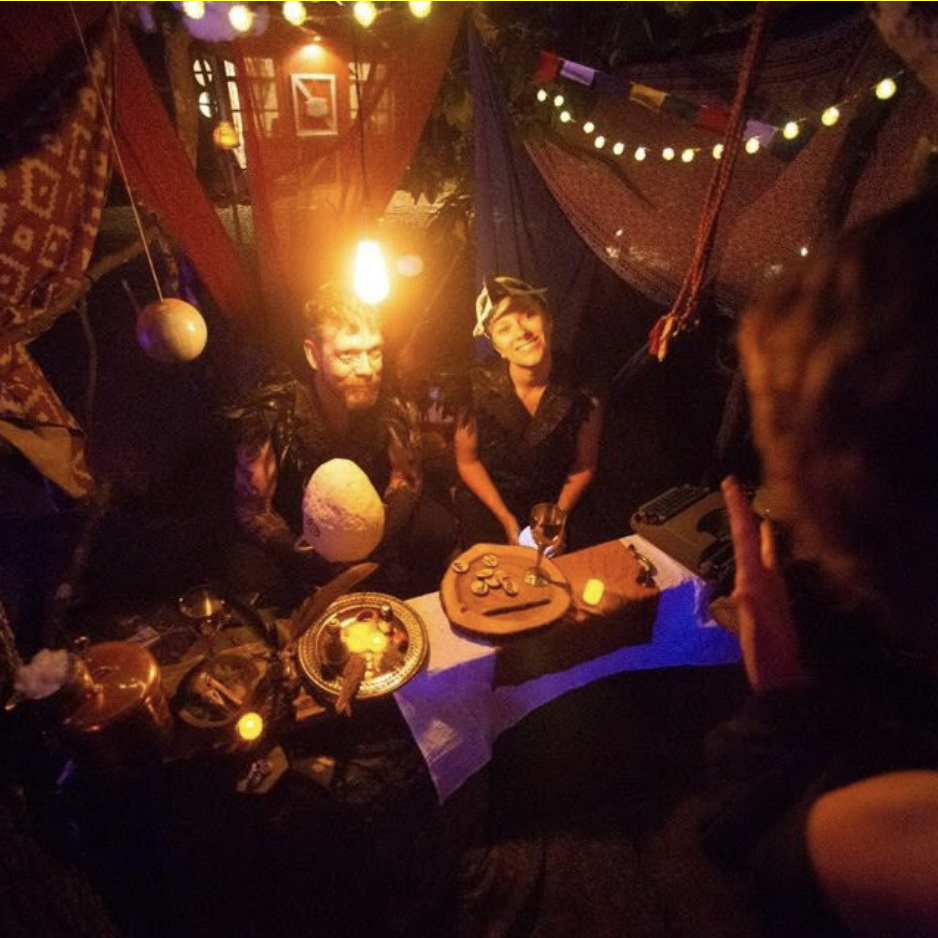
Laika still thinks of these spaces as “waking dreams,” altered states where participants can explore new aspects of themselves and come into contact with narrative, symbol, metaphor, and somatic experiences that have the potential to expand their consciousness.
One of these spaces was called The Perpetual Academy of Illuminated Magic. Participants received scrolls in the mail inviting them to a one-night opportunity to join the Academy in celebration of the everyday ordinary magic in the world. Participants were welcomed into a beautiful, set-dressed home and over the course of the evening they had to collectively earn a series of keys by participating in interactive experiences centered around ordinary magic–things like the magic of sympathetic resonance, the power of symbolism, and how plants get most of their matter out of thin air in the exchange of carbon and oxygen.
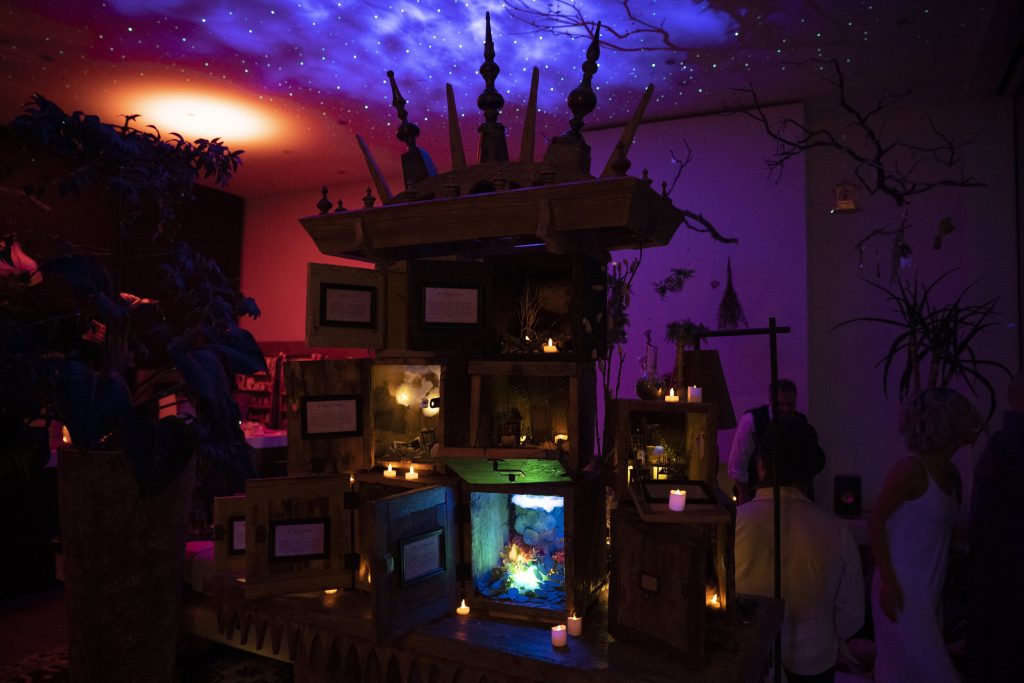
“When our team is working on the experience design for an event, we often refer to our creative process as ‘time travel.’ With enough practice, you can use your imagination to transport yourself into the moment of the event you’re preparing for and see what comes up. That tiny shift in language tends to help our team access more clear mental images and other sensory details in what they imagine.”
Laika O’Brien
Each key opened a potion cabinet with an ingredient inside and over the course of the night, the participants brewed a potion binding their timelines together, ensuring that in the next cycle of life they would remember each other and be able to continue their journey of exploring the everyday ordinary magic of the world.
No Sleep has created a myriad of other experiences for altered states of consciousness. Most of their work is crafted specifically for a client or group of participants and only seen once. Laika shared that their creative process involves a great deal of interviewing, role playing, daydreaming and “time travel.”
Once again, O’Brien described these happenings as experiments in emotional alchemy. At its core, the team at No Sleep is creating narrative-driven experiences with immersive theater elements that are aimed at creating a container in which participants can connect to themselves, each other and the “mysterious consciousness” that animates our world.
End Of Life Experiences
Towards the end of the Campfire, Laika turned the conversation towards another altered state of consciousness: terminal diagnosis and end of life.
In 2017, one of Laika’s best friends, an incredible poet named Honeysun, was diagnosed with terminal brain cancer. Struck with the idea that something must be done as a way to thank Honeysun for the incredible person that she was, Laika and a few friends set out to create an experience for her.
Honeysun was staying in a hotel in San Francisco for a few days so she could get her affairs in order and fly back to the U.K. to spend the last few months of her life with her family. Laika called on a friend named Shanee who raised live butterflies in her home in Oakland and Shanee brought a net and 50 of the butterflies to the hotel.
The butterflies were released in the net and drops of orange juice were placed on Honeysun’s arms and legs so the butterflies came and landed on her. A ritual was performed where Laika captured a strand of wind in a vial with a cork top so Honeysun could take the California ocean breeze with her on her journey home.
Since then, Laika has created a number of experiences for people with terminal diagnoses or nearing end of life and has completed intro to death doula training with the International End of Life Doula Association. They described this journey as something slow and sacred, and credited Stephen Jenkinson of the Orphan Wisdom School and the team at Odyssey Works as some of their greatest teachers in this work.
Here are some of the lessons they described from designing these kinds of experiences:
- Meet people where they’re at. Many people who fall into the category of having a terminal diagnosis may find themselves wanting or needing to stay close to home for a number of reasons. Additionally, when people are ill or approaching end of life, their nervous systems tend to not respond well to a great deal of stimulation. Get to know your audience and perhaps think of the experience you create as a gentle breeze, a meditation, or a simple prayer. Simple is often best.
- Understand what this experience is in service to. It is particularly critical to have a sense of where your desire is coming from in creating an experience for someone who is dying, especially if you have strong emotional attachment to that person. While experience design has the power to create transformational beauty, it is also an art form with the potential to overreach for control. In designing an experience for their grandfather during the pandemic, Laika realized that, in their grief, they were trying to design something extravagant and spectacular, something that would turn their own pain into beauty, when in reality what their grandfather most needed and appreciated was the simple joy of their presence, of shared meals, of looking out the window at the garden.
- The elements have amazing power to support us in grief. This is another place where Laika found the concept of emotional alchemy to be present. In their study of grief rituals from around the world, there seemed to be a pattern: using the elements to translate grief from our bodies into the body of the Earth. Laika described a Peruvian grief ritual where you take a stone about the size of your heart and wail your pain into the stone, telling it the story of your grief. Then you place the stone in a bowl of water and anoint the water with flowers and herbs, singing to it as you do so. Finally, you pour the bowl of water at the base of a tree that you have a relationship with, giving your grief back to the Earth in the form of something that will nourish life.
In 2022, Laika left their position at Meow Wolf to pursue another project and is now working on No Sleep Studio full time alongside Robot Long and the rest of their team. In this next chapter they are working on a project that is simultaneously more extravagant and more simple than any they’ve undertaken before: learning the art of living well and beautifully.
This includes practicing gardening as a way of being with the waking dreams of nature and returning to a relationship with experience design as a form of gift giving. They are also starting work on a project they have been longing for – something that is in service to dreams, death, and ritual.
The Campfire closed with Laika leading everyone in a brief collective action they were introduced to by their friend Casey Rosegren, asking all the audience members to rub their hands together until they could feel heat forming. Then on the count of three, everyone clapped, releasing the energy built up in our time together back out into the world.
Who knows where those ripples will take us? Perhaps into a life of more connection, more wonder, and more meaningful experiences that help us see the beauty in the world and in ourselves.
The WXO Take-Out
As filmmaker Richie Gordon describes:
“The art of filmmaking is not what you’re capturing. It’s creating a space where the magic can flourish, and then bearing witness to it. People want to get intimate: they’re waiting for – or daring – you to have the courage to pull it out of them.”
Richie Gordon
Similarly, Young O’Brien’s experience design practice starts from the belief that people want to be witnessed and feel known. They are desperate for human connection and to be held.
“You embody the invitation that you hope to offer people and they respond in turn. If you go far enough back in any culture you get to a place where everyone knows where everyone and everything came from.
This is ancient: our longing for immersive content today isn’t a new thing, it’s an ancestral longing to live a deeply immersed life where you know the stories of the things around you and your story is known in return.
We help to create experiences that bring people home to themselves and the greater family of the living world.”
Laika Young O’Brien
So next time you’re designing an experience, ask yourself:
- How might you design your experiences for altered states of consciousness?
- How do your experiences integrate the full spectrum of emotion?
- What larger story does your experiences help participants connect with?
To see the full line-up and RSVP for the WXO Campfires Season 7, click here (WXO Members only).
To apply to join the WXO and attend future Campfires, click here.

